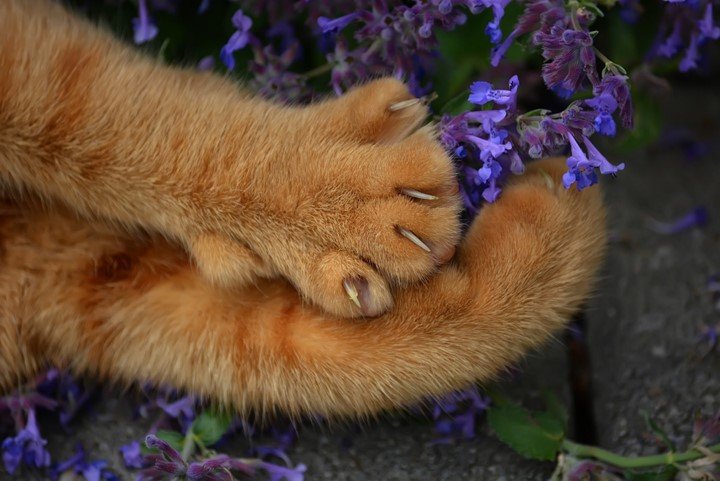Declawing, also known as onychectomy, is an operation done on an animal that removes its claws. It is done by amputating all parts of the animal’s toes’ distal phalanges and end bones. At times, declawing is considered animal cruelty since it causes both physical and psychological suffering to the animal. This procedure is performed under general anesthesia. The cost of the surgery depends on the nature of the procedure, surgical time, and location of the clinic. Declawing is commonly done to cats to keep them from being destructive by scratching furniture and woodwork. In addition, declawing a pet is up to the pet owner in conjunction with the vet. This article takes you through the benefits and limitations of declawing your animal.
Pros of declawing
1. It stops your pet from scratching: Pets like cats love to scratch. It helps to stretch their muscles makes their claws clean and healthy. Scratching also gives pets a sense of authority over other pets of the same kind. Scratching by cats, however, damages carpets, furniture, and curtains. Declawing is a good remedy to stop this dangerous behavior.
2. Improves relationship: The relationship between the pet owner and the pet is improved. after declawing, the pet continues to scratch but no longer causes damage to the pet owner’s furniture and woodwork. Therefore, there is no need to beat up your cat.
3. Reduces tension in pets: Scratching woodwork and curtains in the house typically angers the pet owner, who may try to harm the pet. Pets usually sense this and become tense. However, things are not destroyed in the house after declawing, avoiding tension in pets.
4. Pets are less likely to get harmed by the owner: For obvious reasons, scratching household items makes the pet owner angry and aggressive towards their pet. It can make a pet owner hurt their pet. Declawing prevents this kind of discipline towards pets.
5. Pets are less likely to harm themselves: Usually, cats scratch themselves to keep clean and stop itching in their bodies. However, at times they become extreme and could end up hurting themselves in the process of scratching. Therefore, it becomes important to declaw to prevent this from happening.
6. Prevents harming of people: Your pet uses its claws typically to scratch and harm people in the process of defending itself from attack. However, this could scare away your visitors. Declawing gets rid of claws with sharp nails that could harm other people.
7. It keeps pets in their homes: Once you declaw your pet, you won’t fear your household items being scratched and destroyed. Some pet owners chase away their pets that could have damaged their household property. However, this is not necessary once declawing your pet has been done. Most pet owners admitted that they wouldn’t have kept their cats in the house if declawing had not been available in a certain survey.
8. Medical welfare of your pet: Your vet may recommend that you declaw your pet for its medical welfare. It could be due to paronychia and Neoplasia. Paronychia is a fungal infection at the boundary between the pet’s claw and skin. On the other hand, Neoplasia is an abnormal tissue growth around the claw of your pet. These medical issues mostly occur in cats. Declawing your cat is a good remedy to prevent such medical issues in cats.
9. Relatively cheap in some countries: It is relatively cheaper to declaw your pet in some countries than in others. If you can afford it, why not go for it.
10. Change of behavior in pets: Declawing, your animal hardly changes its desirable behavior. It will only stop scratching and continue to be the adorable pet it was before it underwent the procedure.
Cons of declawing
1. Painful procedure: The amount of pain caused to a pet during declawing has not been established. It is not easy to assess the pain since pets like cats are stoic. However, it is indeed true that it is a painful procedure. Some signs of pain include the ‘guarding posture,’ reluctance to bear weight on the declawed limb, and hesitance to move.
2. Hemorrhage: Hemorrhage has been reported in most cats that underwent the declawing procedure. Older cats were reported to bleed profusely as compared to kittens. Bleeding occurs up to 13 days following surgery. Therefore, the animal could lose excessive blood, thus leading to death.
3. Causes claw regrowth: This happened when the ungula crest was incompletely removed. It could result in abscess formation and pain. Regrowth is quite uncommon as it happens to up to 3% of the procedures.
4. Wound dehiscence: Opening the surgical incision results in lameness in cats that have undergone declawing. Dehiscence occurs more frequently due to scalpel dissection. It can also be because the declawing surgical procedure takes along.
5. It can cause paralysis: Neuroplaxia from the improper surgical procedure has been reported frequently.
6. It causes Distal limb ischemia caused by improper bandage application. It is a serious complication occurring mostly in cats that underwent the procedure.
7. It can cause disease: Pain resulting from this procedure activates the stress response, which reduces the immune function. The animal’s risk of getting a disease is thus increased. Your pet becomes susceptible to chronic illnesses such as skin disorders, asthma, and cystitis.
8. Impairment of normal behavior: Scratching is normal behavior, especially in cats. Declawing a cat to prevent scratching thus causes emotional stress since the pet is unable to scratch. Other normal behaviors affected by declawing your animal include climbing, balance, and social interaction with its kind.
9. Increases undesirable behavior in pets: These behaviors include aggression and biting that did not exist before declawing.
10. It is a relatively expensive procedure: The cost of declawing is rather high in some countries. Other alternatives that are safer for cats can thus be used. These include; Nail trimming, using nail caps, training your pet to change its natural behavioral patterns. It could be done when the cat is still young.



